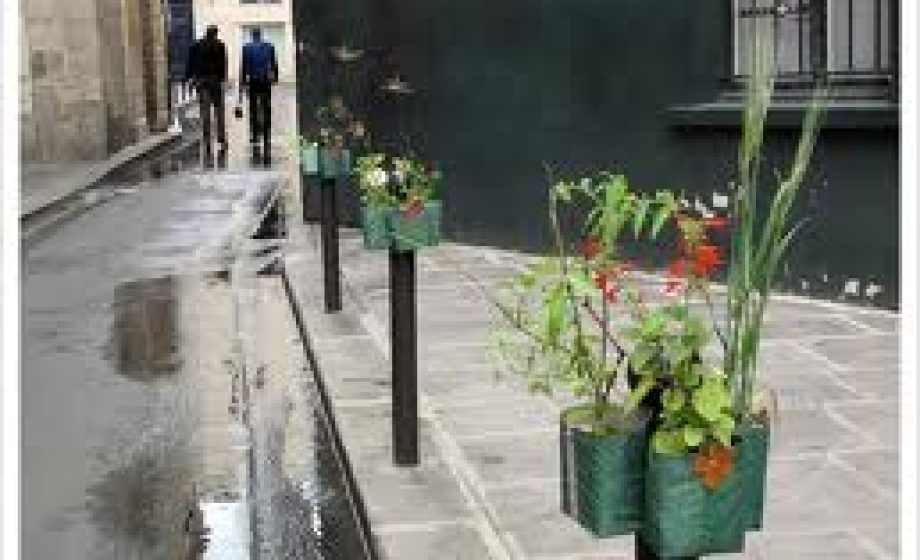For the second time in a month this weekend,  fortune had it that I caught one of the brand new trains on RER B. I’ve long suspected that one of the reasons that keeps Paris below other world-class cities in various rankings (such as the recent 11th out of Startup Genome’s Top 20 Startup Ecosystems) is that our city lacks clean and efficient transport links from Charles de Gaulle airport to the city center.
fortune had it that I caught one of the brand new trains on RER B. I’ve long suspected that one of the reasons that keeps Paris below other world-class cities in various rankings (such as the recent 11th out of Startup Genome’s Top 20 Startup Ecosystems) is that our city lacks clean and efficient transport links from Charles de Gaulle airport to the city center.
Accordingly, I welcomed the RATP’s refurbishment efforts of the regional RER B line that runs from CDG through several stations in Paris before continuing south towards Orly airport as a small but smart step in addressing at least part of the problem. (An even better improvement would be the creation of an express train service similar to London’s Paddington Express from CDG straight into the heart of the business district, such as Place de l’Etoile, but for the moment this remains but a pipe dream).
To my astonishment, barely a few months into the deployment of the new trains, several of the cars are already trashed. Many are tagged with graffiti, the seats are stained with gum, and rubbish litters the floors. Am I just becoming a grouchy old man, or have we become savages ?
I pride myself on walking or taking public transportation whenever I travel, even when traveling to other cities on business, where re-billing a taxi fare to my portfolio companies or to my fund is common practice in this business. I assert that one indicator of an advanced society is the number of people with means who proactively choose to avoid driving in lieu of public transportation. Indeed, it’s one of the primary reasons that inspired me to leave Silicon Valley – where sitting in traffic on 101 (or even 280 during bubble times) became insufferable – for Paris.
So it’s a pity that our beautiful new RER B trains have already been dissed. I submit that it’s really a case of disrespect. And I want to draw a distinction between actively seeking to change the rules for the better – i.e. the trait of successful entrepreneurs – and juvenile disrespect for order out of sheer delinquency. The latter, I would argue, depletes time and money from innovative projects and thus holds society back.
This incident with the RER trains reminds me of the kerfuffle last spring in voting the budget of Paris’ 2eme arrondissement.
To recap: the questionable line item of the draft budget revolved around a proposed expenditure on materials and labor for pesticide spraying. If you’re wondering why pesticide spraying was needed in the smallest district of the concrete jungle in the center of Paris, you’re not alone. Apparently, the planter boxes filled with flowers and herbs that adorned the poteaux des trottoirs on several streets had attracted swarms of gnats.
The poteaux des trottoirs are the hazardous meter high brown poles that dot the Paris sidewalks. Since not a day goes by without a grown man in a hurry knocking his groin on one the poles, or a 5 year-old smacking his head on one, the hazards inspired some neighborhoods to beautify the poles with artwork, flowers, or plants, such as the Opération Potogreen initiative in Paris 2eme.
Opération Potogreen proved a commendable textbook success in community solidarity. Within two months in 2011, 600 of the district’s schoolchildren collected over a thousand recycled milkcartons, the mayor’s office provided soil, a local farm furnished organic seeds, and the neighborhood’s sidewalk retailers and residents pitched in to hang the planters on five dozen sidewalks. The outcome was gorgeous.
Unfortunately, an unintended secondary outcome involved the attraction of a million insects from the armpit of city known as Ile Saint Louis, hence triggering the debate about pesticides in the only arrondissement whose mayor hails from the Green party.
The whole brouhaha prompted me to explore the reason for these pesky poteaux des trottoirs in the first place. It turns out that these poles – also referred to as poteaux anti-stationnement – were originally installed to prevent cars from parking on the sidewalks!
That’s right, a simple No Parking sign proved insufficient. The only way to effectively prevent illegal parking in Parisian society required the installation of 335,000 steel poles on the sidewalks, for an estimated cost of € 20 million. Of course, that’s excluding the cost of the pesticides…

